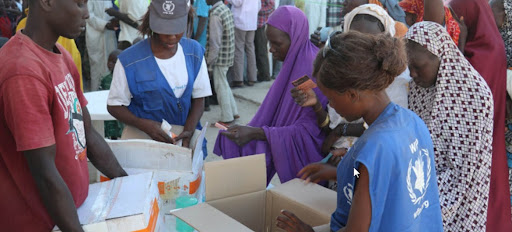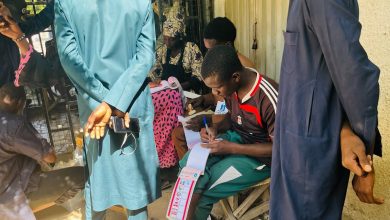Fate Of Vulnerable Population In Northeast Nigeria Plunged Into Uncertainty Due To Donor Fatigue
Nigeria’s BAY states have begun experiencing a decline in humanitarian funding due to donor fatigue on the part of aid organisations, putting millions of lives at risk.

Since the beginning of the Boko Haram insurgency over a decade ago in the Northeast region of Nigeria, deaths and displacement continue to rise.
The humanitarian crisis that has stemmed from the insurgency has seen millions of people across the region in dire need of assistance. But, in more recent years, the funding to provide this aid has dwindled substantially.
Nigeria has been heavily dependent on financial aid from international donors since the beginning of the conflict. But donors have begun to show signs of tiredness due to the unending nature of the armed violence and the inability to provide for the rising number of vulnerable people.
Many donor organisations have drastically cut funding to the Northeast also due to the economic impact of the COVID-19 pandemic, as well as the rising prices of raw materials such as foodstuff and medicines.
Just last Friday, the West Africa Regional Director for the World Food Programme (WFP), Chris Nikoi, said the planned cuts in food rations means more people will go hungry. This is at a time when famine has reached an all-time high.
More than four million people as of Nov. 2020 were at risk of famine in the region, warned the United Nations Office for the Coordination of Humanitarian Affairs (OCHA).
“Without additional resources, the food assistance agency will run out of funds for emergency food distribution and nutrition support by the end of Oct. 2021,” Nikoi said.
The crisis in Borno, Adamawa, and Yobe has been described as one of the largest in the world due to the number of people it has displaced.
People in the region have found themselves in even worse conditions compared to when the conflict began. The number of those affected has continued to increase despite the large amounts of funding directed towards cushioning the effects.
OCHA stated earlier this year that 8.4 million people in the BAY states were in need of some form of humanitarian assistance.
In the organisation’s humanitarian response plan released in March, a sum of $1 billion was said to be needed to address the humanitarian needs in the region, an increase of about $200 million compared to what was required in 2020.
Last year, a little over half (55 per cent) of the required funding was raised.
Only $557 million of $1 billion needed this year has been raised as of Sept. 30, with more than half coming from the United States government.
In 2017, Nigeria received its highest amount of funding from donors, amounting to $943.3 million. This goes to show how much funding has decreased within the past five years.
HumAngle also reported in March that the UK’s Foreign, Commonwealth and Development Office (FCDO) planned to slash aid funding in many countries, with Nigeria on the list.
This came to fruition when the UK cut funding to the United Nations Children’s Fund (UNICEF) by 60 per cent the following month.
A specialist on humanitarian assistance in the Northeast revealed that the donors are now channelling available funding towards stabilising the region and peacebuilding.
According to the source, donors over the past 10 years have not seen any significant change or impact despite their support, causing them to scale back on funding for humanitarian aid.
“It’s now time for resources to be mobilised for next year, but many donors are concerned their money is only funding terrorism that has yet to show any sign of ending. So, issues around stabilisation and peace building are what they are turning their focus on. So yes, there is definitely fatigue on part of the donors,” she told HumAngle.
“The beneficiaries are not fully benefiting from the aid and the donors are not seeing where their money is going. Although they have structures for accountability in place, they are not easily implementable in the Nigerian environment. In the case of IDPs, most of them are taken advantage of by the security or camp officers before accessing the said assistance. The situation is quite terrible.”
Despite the obvious reasons for the cut in the aid such as the aforementioned socio-economic impact of the pandemic, the lingering insecurity which has shown no sign of ending anytime soon. This caused humanitarian agencies to now redirect their efforts towards a more permanent solution.
“There were many assumptions made in the beginning that, by now, the conflict would be in its stabilisation and peacebuilding stage, but this has proven to be impossible due to many places remaining inaccessible,” she said.
“Many of them didn’t have a full idea of what the conflict in the region was like until they set foot there, saw the reality on ground and the dynamics of conflict. Because of this, many programmes failed because of this oversight during the design phase.”
An example she cited was the inability of staff and aid workers to access more remote areas.
“A project is to be implemented in 16 local government areas of Borno state, yet there are no staff capable of reaching those said areas because they haven’t been sensitised beforehand, and the roads cannot be accessed without putting the said staff at risk of being kidnapped or killed. In essence, the project cannot be fully implemented without putting lives at risk. Their situational analysis was peripheral,” she stated.
Support Our Journalism
There are millions of ordinary people affected by conflict in Africa whose stories are missing in the mainstream media. HumAngle is determined to tell those challenging and under-reported stories, hoping that the people impacted by these conflicts will find the safety and security they deserve.
To ensure that we continue to provide public service coverage, we have a small favour to ask you. We want you to be part of our journalistic endeavour by contributing a token to us.
Your donation will further promote a robust, free, and independent media.
Donate HereStay Closer To The Stories That Matter




